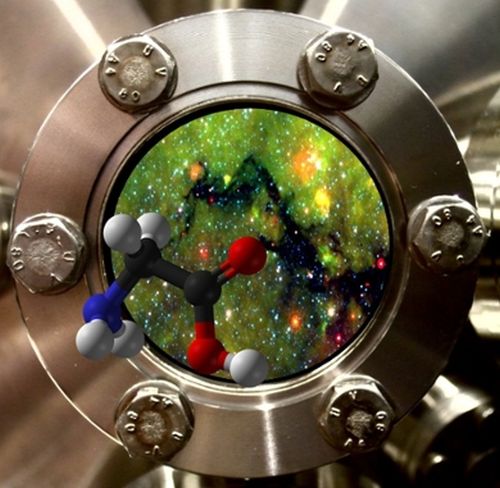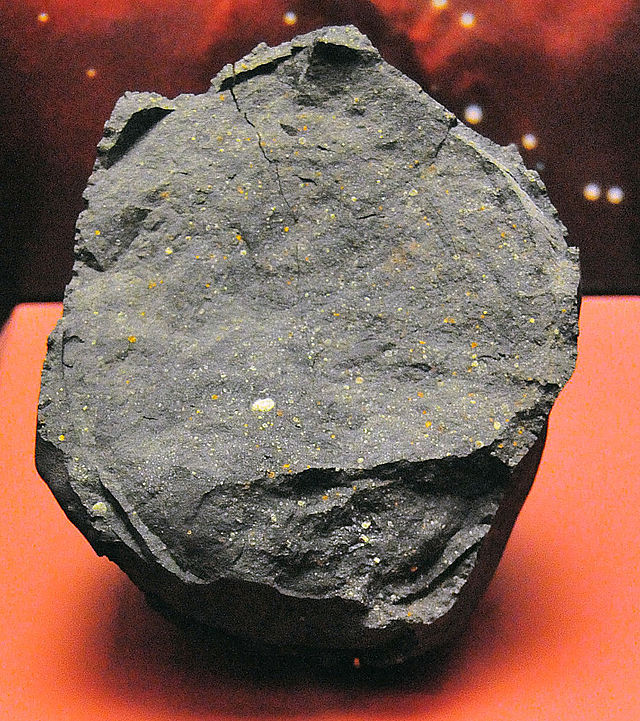In many ways, stars are the engines of creation. Their energy drives a whole host of processes necessary for life. Scientists thought that stellar radiation is needed to create compounds like the amino acid glycine, one of the building blocks of life.
But a new study has found that glycine detected in comets formed in deep interstellar space when there was no stellar energy.
What natural processes gave rise to the building blocks that gave rise to life? That question drives a lot of research. We know that amino acids like glycine are essential for life, but scientists lack a complete understanding of how those building blocks form.
Out of the approximately 500 known amino acids, glycine is the simplest of them and is one of the 20 amino acids in the genetic code. It’s not one of the essential amino acids because it can be synthesized in the human body.
Scientists have found glycine in the coma of comet 67P/Churyumov-Gerasimenko, for instance, and at comet Wild-2. And in recent years, scientists have detected other complex organic molecules (COMs) in meteorites. But our understanding of how complex molecular building blocks form is far from complete. And without that understanding, we’ll never figure out how life got started here on Earth.

Comets are considered ancient, primordial objects. They formed directly out of the solar nebula when the planets and the Sun were about to form. Finding glycine in comets means that it can be produced without the direct input of stellar energy. This has implications for how widespread this simplest of building blocks can be, and possibly how likely life is to arise.
The creation of glycine without energy from a star is termed “dark chemistry.” Now a team of researchers have made laboratory simulations of the inside of dark interstellar clouds. Those simulations produced methylamine, a pre-cursor to glycine, and then showed that glycine itself can form.
“Dark chemistry means chemistry without the need of energetic radiation,” says Sergio Ioppolo from Queen Mary University in London. Ioppolo is the lead author of a new article published this week in Nature Astronomy. The article is titled “A non-energetic mechanism for glycine formation in the interstellar medium.”
“In the laboratory, we have simulated the conditions in dark interstellar clouds: 10-20 K (-263 C to -253 C)cold dust particles are covered by thin layers of abundant ices – frozen CO, NH3, CH4 and H2O – and subsequently processed by impacting atoms causing precursor species to fragment and reactive intermediates to recombine,” lead author Ioppolo said in a press release.

Glycine’s precursor methylamine was detected in comet 67P’s coma, along with glycine itself. Another glycine precursor, ethylamine, was also detected. In a 2019 paper title “Distributed glycine in comet 67P/Churyumov-Gerasimenko” researchers concluded that the observed glycine likely came from “glycine molecules embedded in water ice that are emitted from the sublimation of this ice from the dust particles that are ejected from the nucleus.” In this new study’s lab process, water ice was essential to the eventual formation of glycine.
The main takeaway from this study is that glycine, a basic building block of life and the simplest amino acid, is present as planets form, embedded in the primordial ice of comets.
“The important conclusion from this work is that molecules that are considered building blocks of life already form at a stage that is well before the start of star and planet formation,” says study co-author Harold Linnartz, Director of the Laboratory for Astrophysics at Leiden Observatory. “Such an early formation of glycine in the evolution of star-forming regions implies that this amino acid can be formed more ubiquitously in space and is preserved in the bulk of ice before inclusion in comets and planetesimals that make up the material from which ultimately planets are made.”

This is a distinctly different result than in some previous research. Prior work showed that UV radiation was necessary for glycine to form.
One of the strengths of these lab simulations is that they can compress time. One day of lab work can be a proxy for millions of years in a cold, dark interstellar cloud. “From this, we find that low but substantial amounts of glycine can be formed in space with time,” said co-author Herma Cuppen (Radboud University, Nijmegen), who was responsible for some of the modelling studies presented in the Nature Astronomy publication.
Glycine is a true building block. It can lead to the formation of more complex molecules, implying that they too may form via dark chemistry.
“Once formed, glycine can also become a precursor to other complex organic molecules,” concludes Sergio Ioppolo. “Following the same mechanism, in principle, other functional groups can be added to the glycine backbone, resulting in the formation of other amino acids, such as alanine and serine in dark clouds in space.”

In their paper, the team of researchers summarizes their work: “An early formation of glycine in the evolution of star-forming regions implies that glycine can be formed more ubiquitously in space and be preserved in the bulk of polar ices before inclusion in meteorites and comets during planet formation in protoplanetary disks surrounding newborn stars. Once formed, prestellar glycine can also become a precursor species to more complex molecules by ‘energetic’ and ‘non-energetic’ surface reaction routes.”
The fact that glycine can form in the cold dark of interstellar space, prior to any interactions between a planet and a star, could significantly change our understanding of the emergence of life. This study shows how primary building blocks are readily created in unlikely places. After being created in primordial bodies like comets, they were eventually delivered to planets like Earth.
“The conclusion is that glycine and possibly other building blocks of life are expected to be present at least in the solid phase across many starforming environments including the coldest and earliest stages of solar-type systems formation,” the authors write.
More:
- Press Release: Glycine in space produced by dark chemistry
- New Research: A non-energetic mechanism for glycine formation in the interstellar medium
- Universe Today: Astronomers Report They’ve Detected the Amino Acid Glycine in the Atmosphere of Venus

